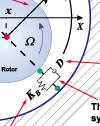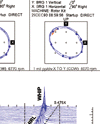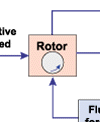
by Agnes Muszynska, Ph.D.
Research Manager
and Senior Research Scientist
Bently Rotor Dynamics
Research Corporation
agnes@bently.com
He asks, "My question is in reference to the article on pump vibrations, 'ADRE® for Windows - instrumental in solving a complex vibration problem on a boiler feedwater pump.' There is mention of a 0.87X sub-sync due to 'pump whirl.' Pump whirl is a new term for me, and I was hoping I could be pointed in the direction of finding more about it. Is it an incompressible version of Alford's Force?"
According to D. Childs (1993), H. Thomas suggested in 1958 that nonsymmetric clearances caused by eccentric operation of a steam turbine rotor can create destabilizing forces ("clearance excitation"). Most of Thomas' papers were written in German, and were not popular in the United States. Subsequently, J. Alford (1965) identified the same mechanism when analyzing stability problems of gas turbines. Since then, excitation forces due to clearance changes around the periphery of a turbine rotor were popularly called "Alford forces." H. Black (1974) suggested that pump impellers could also develop similar destabilizing forces. Since 1974, a large number of papers have been written based on theoretical analyses and various experimental tests conducted at many research centers.


